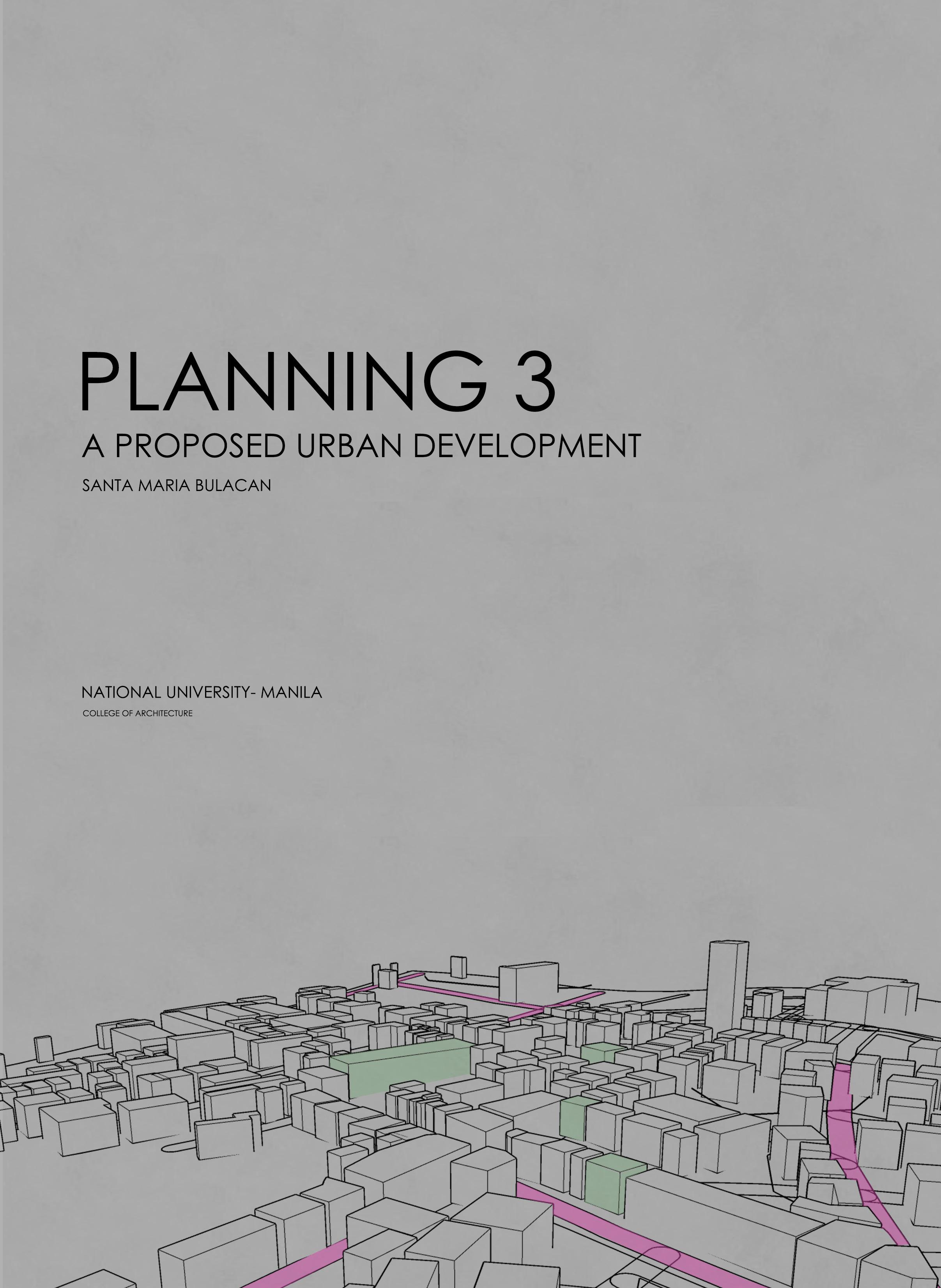
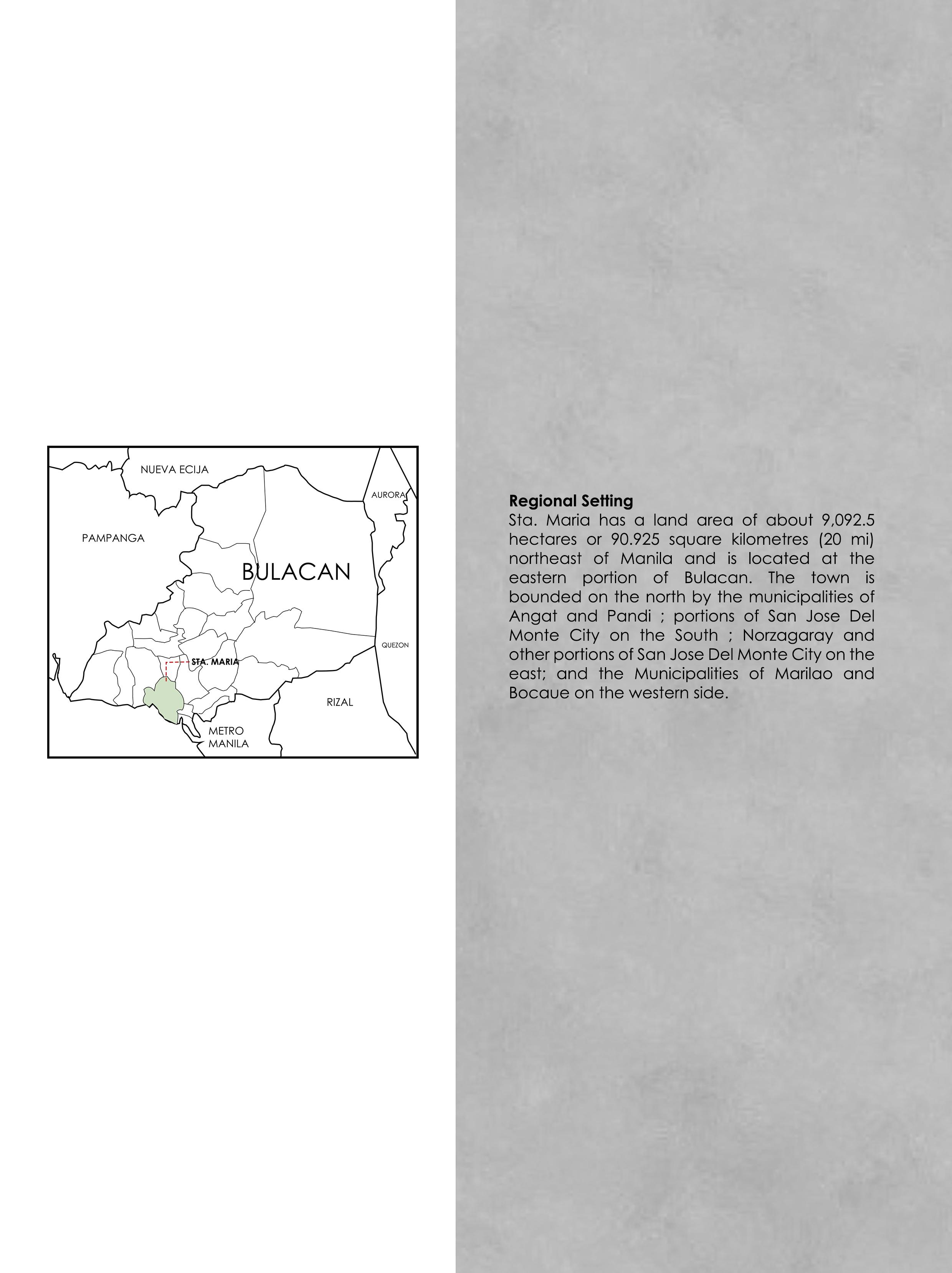
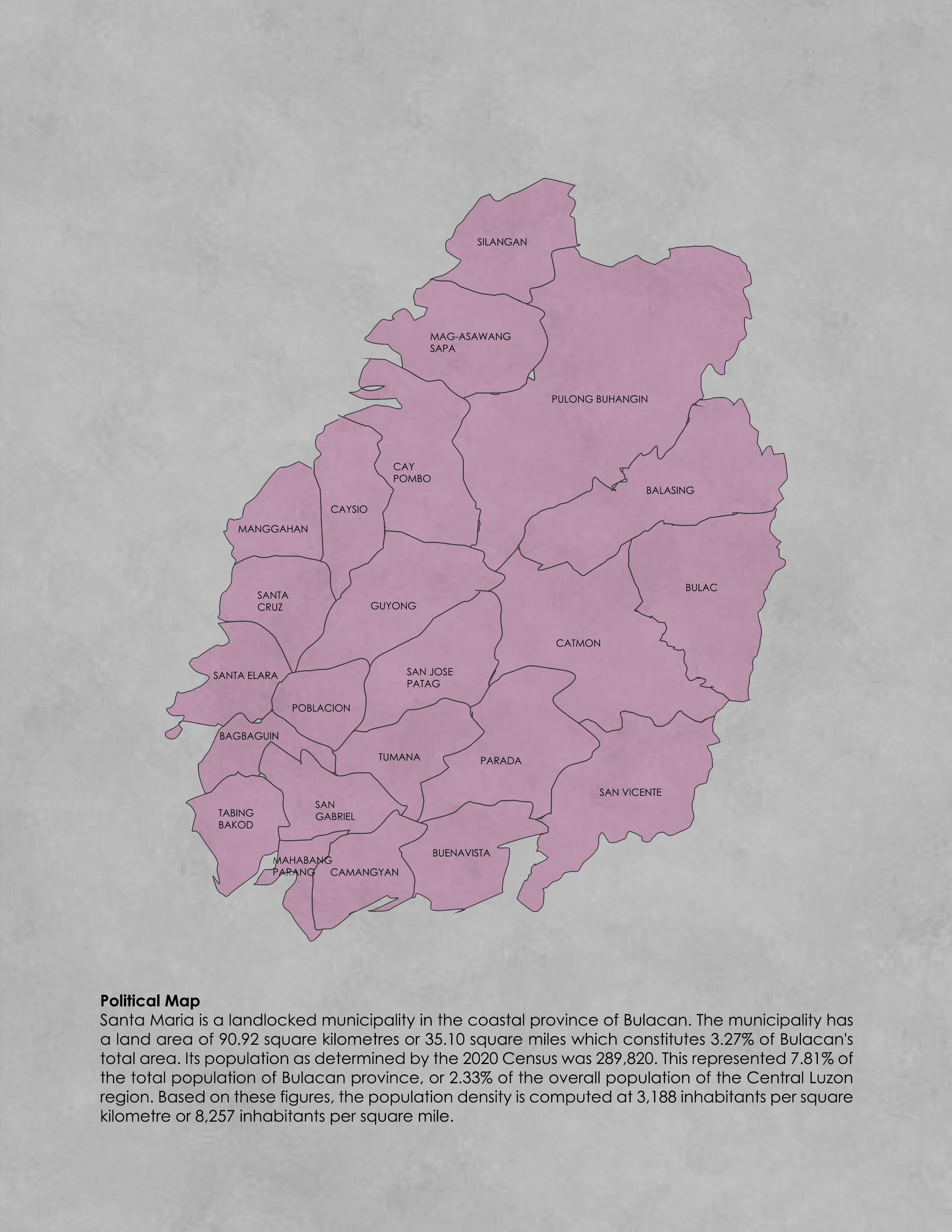
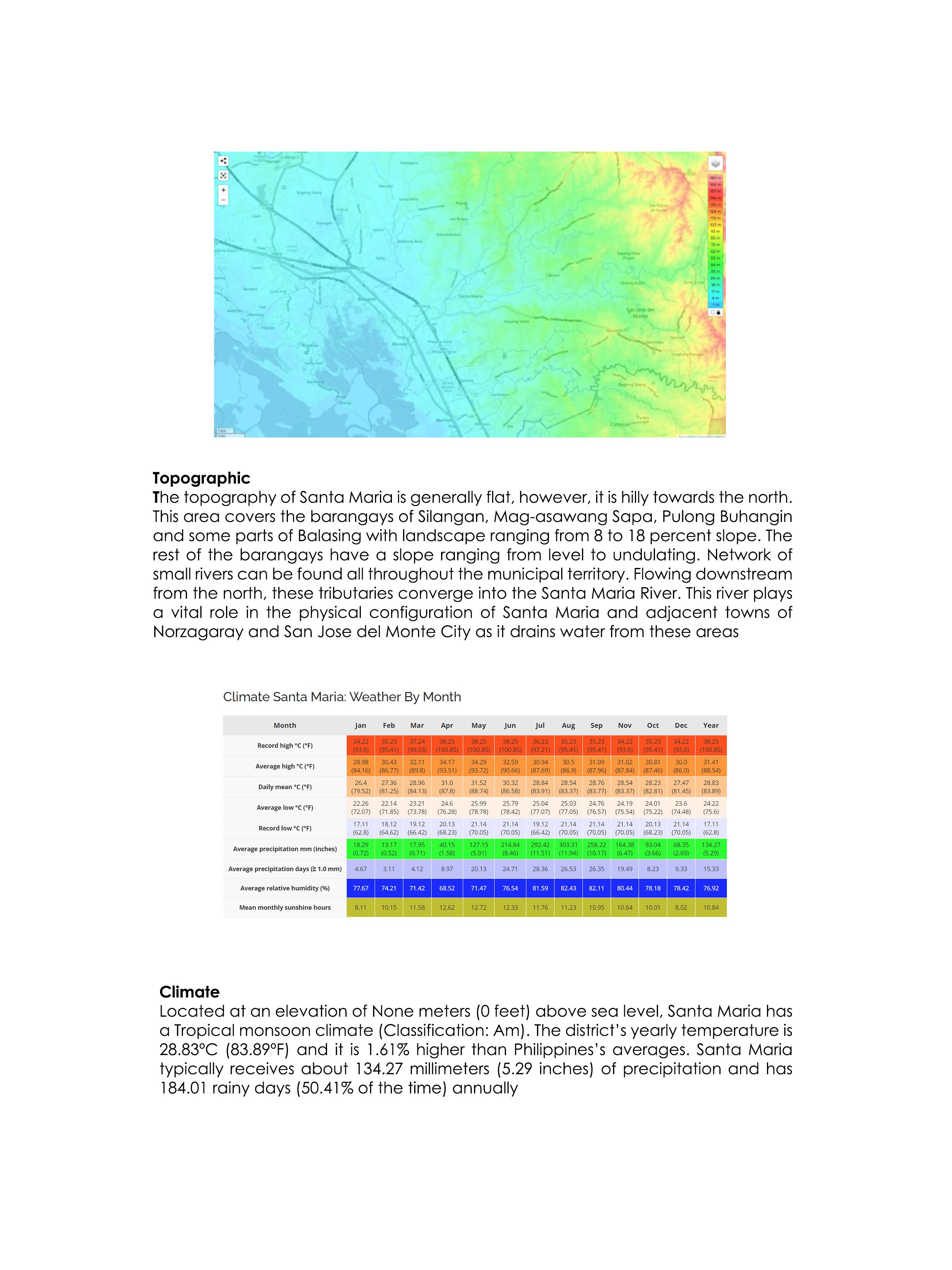
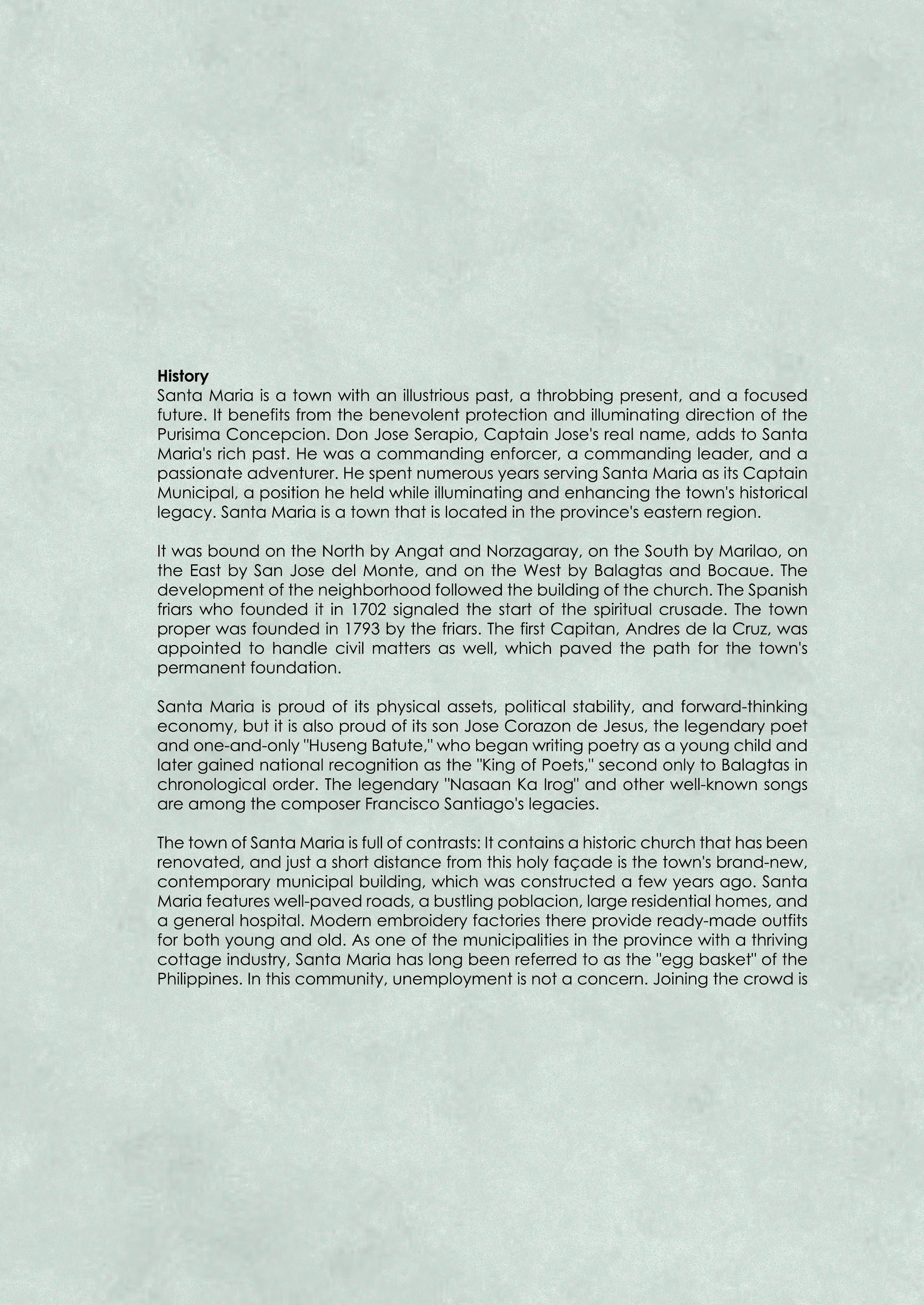



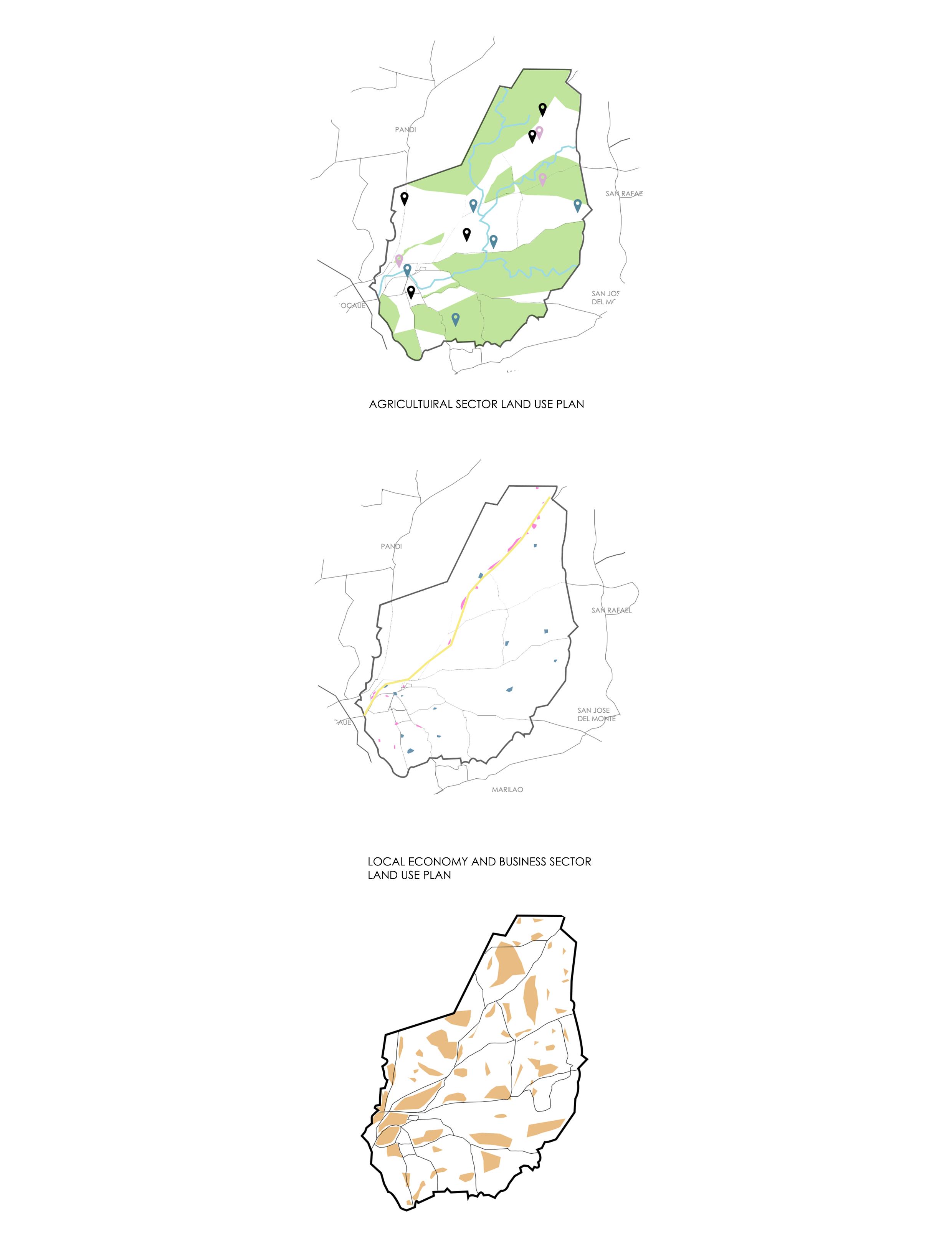
AGRICULTURE SECTOR LAND USE PLAN
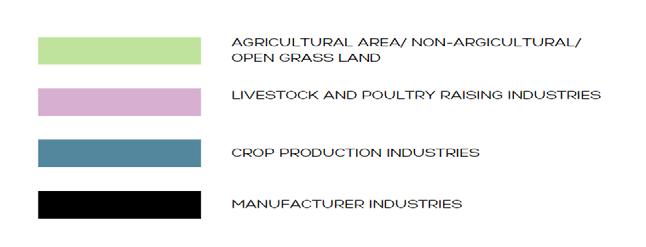
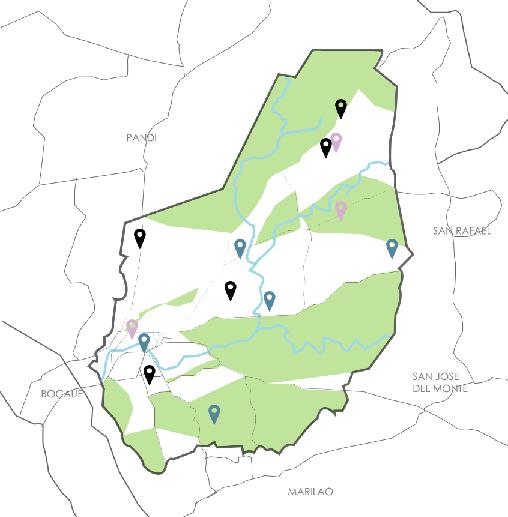
About 29.02 square kilometres (11.20 sq mi) or 30.54% of the town’s land areais devoted to crop production. Approximately 26.66 square kilometres (10.29 sq mi) of riceland in Santa Maria are rain-fed and 2.36 square kilometres (0.91 sq mi) are irrigated. An area of 32.74square kilometres (12.64 sq mi) arclassified as non-productive agricultural area or open grasslands.
Agri-industrial sector
Industrial activities in Santa María are mostly agro-based. For the past two decades, there has been a great boom in its poultry and hog raising industries. Presently, there are around more than 150 poultry and piggery farms.The boost in agri-business necessitated the establishment of feed mills and feed trading centres. Now, there are eight commercial feed mills and 15 feed trading centres operating in the town.
There are 20 rice mills in Santa María that accommodateD The milling and storage needs of the farmers for their palay harvest. The rice bRan (darak production) of these mills complement the feed requirements of the livestock raisers
Santa María is predominantly agricultural. However, commercialization and industrialization is fast developing in the municipality. At present, there are more than 6,100 registered commercial establishments, most of them are in Barangay Poblacion, Pulong Buhangin, Caypombo, Sta. Clara, and Bagbaguin. There are more than 30 banking and financial institutions in Santa María These includes commercial, savings and rural banks.
The tertiary or the service sector is the main driver of the local economy of Sta. Maria bulacan. In terms of the sub-sectors, more than half of the service-oriented establishments are engaged in wholesale and retail trading. Despite that agriculture is the weakest among the three (3) major sectors of the local economy of Bulacan, its contribution is of significance to national food security. The province is a major producer of hogs, chicken, vegetables, banana, mango, coffee, and aquaculture, specifically milkfish.
In terms of the historical population and/or production, the performance of mango, pineapple, coffee, carabao, cattle, duck, and aquaculture is on a decline while chicken, swine, and vegetables is on an upward trend. Palay production is also increasing but sufficiency level is on a downtrend. Historically, the area intended for rice planting recorded a negative slope from 1980 to 2010. This means that the production area for palay is shrinking. This is the expected effect of the irrational and indiscriminate conversion of agricultural land to other uses, especially in recent years.
Further, palay productivity is improving but less productive compared to the Region. It suggests that some of the provinces in Central Luzon are becoming more productive compared to sta. Maria bulacan. The province has remained as the MSMEs capital of Central Luzon and the cooperative capital of the Philippines. However, the growth of the MSMEs has recorded a low and slow movement. Export performance is also decreasing wherein even the major export of the province, which is garments, is consistently on a decline. On the other hand, the figures on the number of active cooperatives and the combined assets suggest that this sector is still a thriving segment of the local economy of Sta. Maria Bulacan.
LOCAL ECONOMY AND BUSINESSSECTOR LAND USE PLAN

HOUSEHOLD SETTLEMENTS LAND USE PLAN
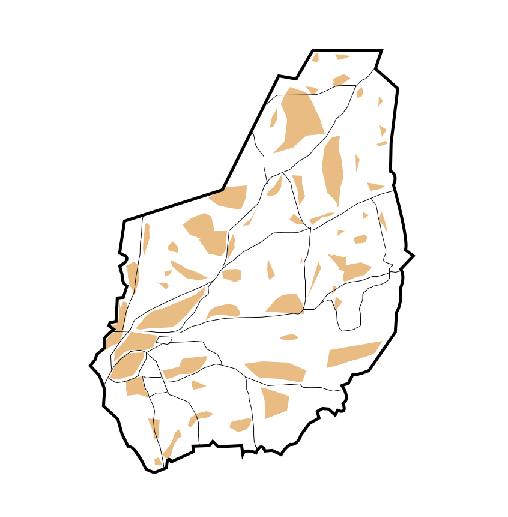
The municipality has a land area of 90.92 square kilometers or 35.10 square miles which constitutes 3.27% of Bulacan’s total area. Its population as determined by the 2020 Census was 289,820. This represented 7.81% of the total population of Bulacan province, or 2.33% of the overall population of the Central Luzon region. Based on these figures, the population density is computed at 3,188 inhabitants per square kilometer or 8,257 inhabitants per square mile.
In the municipality, there are 24 barangays. The pulong buhangin barrio has the highest annual population growth rate (2.36%), while the lalakhan barangay has the lowest annual population growth rate (-0.16%) and just 2,329 residents in 2020. The picture below demonstrates how the population has changed throughout time.
RURAL RESIDENTIAL DEVELOPMENT
There are already significant opportunities for rural ‘lifestyle’ living. Santa Maria has a land area of about 9,092.5 hectares (22,468 acres). The town is generally plain although hilly at the northern portion. It has a lone body of water . Santa Maria, with a population of 289,820, remains by a significant margin the most populous municipality in Central Luzon, as well as the 5th most populous municipality in the Philippines. Rural Residential land in the region is 3,990 hectares. In addition, dwellings on traditional rural properties can create Conflict with surrounding working farms. In general, unplanned rural residential Allotments are undesirable because of their potential for:
- land use conflict with adjacent rural uses;
- land speculation causing inflated agricultural land prices;
- fragmentation of rural lands;
- natural resource impacts from clearing, construction and on-site effluent disposal;
- social isolation and demand for extension of urban services and infrastructure
The Regional Strategy allows limited opportunities for additional rural Residential development that are identified as part of an endorsed growth Management strategy, settlement strategy or structure plan. With the existing extent of supply and the environmental, accessibility and land use conflicts that arise from Rural residential development, additional rural residential zonings will need Compelling reasons to justify. Any proposals for rural residential development Should be located on cleared lands that are not considered suitable for rural or Conventional urban uses and should be close to existing centers and towns where Services and infrastructure may be more readily accessed.
Main roads (blue) are 15 m RROW wide. Other routes in various municipalities in Bulacan connect these highways. Street roads and secondary roads have a width of 6 meters. These roads are located adjacent to the residential areas and major roadways.


ROAD NETWORKS
EXISTING GIVERNMENT PLANS FOR URBAN AND TOIURISM INFRASTRUCTURE

Department of Tourism (DOT) - The DOT is responsible for promoting and developing the country’s tourism industry. In Santa Maria, the DOT has implemented the Tourism Road Infrastructure Project, which aims to improve access to tourist destinations and promote tourism-related economic activities.
Department of Public Works and Highways (DPWH) - The DPWH is responsible for the planning, construction, and maintenance of national roads, bridges, and other infrastructure projects. The agency has several ongoing projects in Santa Maria, including the widening of the Santa Maria-Tungkong Mangga Road, which will improve access to the city’s tourist destinations.
Department of Transportation (DOTr) - The DOTr is responsible for developing and implementing policies and programs for the country’s transportation system. In Santa Maria, the DOTr has initiated the construction of the North Luzon Expressway (NLEX) Harbor Link Segment 10, which will improve access to the city’s urban centers and tourist destinations.
Department of Environment and Natural Resources (DENR) - The DENR is responsible for the management and protection of the country’s environment and natural resources. In Santa Maria, the DENR has implemented the Integrated Natural Resources and Environmental Management Project, which aims to promote sustainable development and protect the city’s natural resources.
ENVIRONMENTAL / WASTE MANAGEMENT
-AWARE [Assorted Wastes Administration and Recycling Enterprise, Inc.]
-RURAL INDUSTRIAL CORPORATION
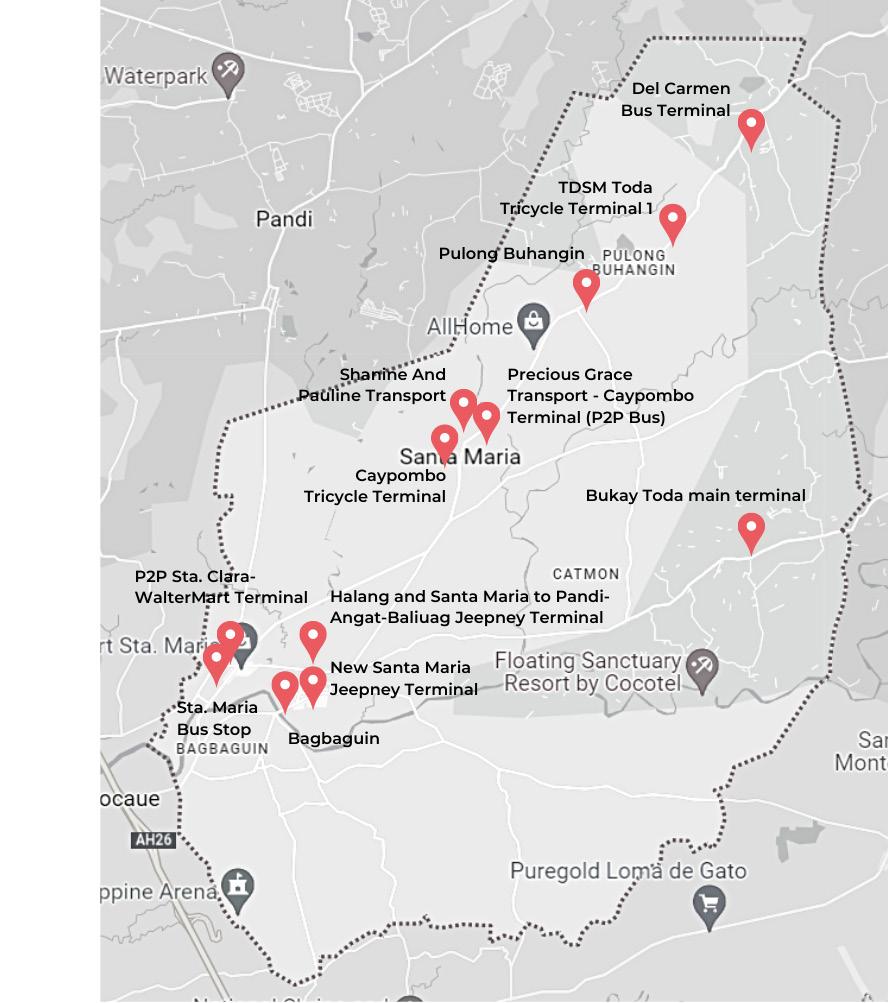
-TRIPPLE LEAVES HAZARDOUS WASTE
-MANAGEMENT SERVICES
-Samtre Waste Management Corp.
URBAN TRANSPORT SYSTEM
-Halang and Santa Maria to Pandi-Angat-Baliuag Jeepney Terminal
-New Santa Maria Jeepney Terminal
-P2P Sta. Clara-WalterMart Terminal

-Sta. Maria Bus Stop
-Bagbaguin
-Shanine And Pauline Transport
-Caypombo Tricycle Terminal
-Precious Grace Transport - Caypombo
-Terminal (P2P Bus)
-Bukay Toda main terminal
-Pulong Buhangin
-DSM Toda Tricycle Terminal 1
-Del Carmen Bus Terminal
POWER PLANT/ ELECTRICITY DISTRIBUTION

-Global ElectrIc Power Development Corporation
-Meralco Business Center - Sta. Maria Branch
-Meralco Sta. Maria Substation
DRINKING WATER DISTRICT/STATION
-MBKT Water Refilling Station
-Mineral & Purified Drinking Water
-city water
-Sta. Maria Water District Office
-Sta. Maria Water District Office (new building)
-Aquarius Mineral Water Station
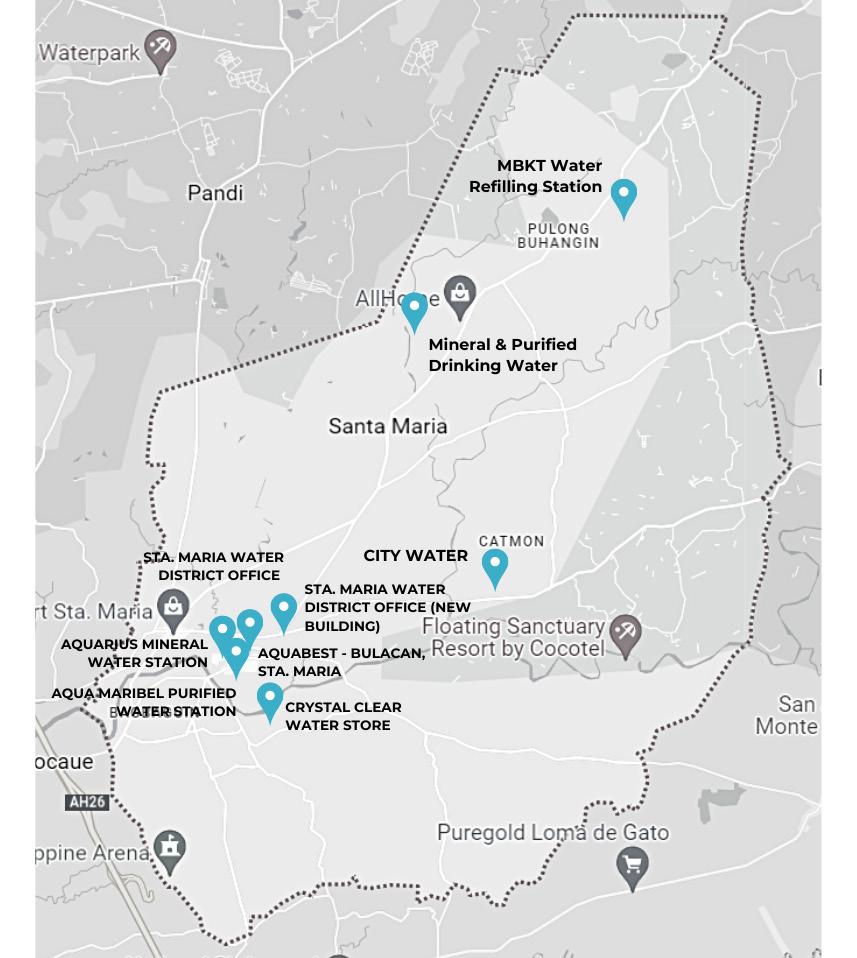
-Aquabest - Bulacan, Sta. Maria
-Aqua Maribel Purified Water Station
-Aquabest - Bulacan, Sta. Maria 2
-Crystal Clear Water Store
PLANNING CONCEPT
The planning concept of this development is Geddian trio Concept by Patrick Geddes. Sir Patrick Geddes believed in the concept of area and valued human life above all else. His values centered on stressing human life and energy rather than their aesthetic appeal. Drawing inspiration from sociologist Frédéric Le Play’s triad Lieu, Travail, Famille, geddes translated them as “Work, Place, Folk” and developed an urban planning philosophy. The geddian trio concept was created by giving priority to local surveys and human-centric designs, based on a resident’s workstyle, culture, heritage, beliefs, the region’s topography, climatic variations, networks, and everything else.
{picture}
The picture will serve as a guide for the placement of the development proposal. Economic growth is emphasized through merging agricultural and institutional development. Agriculture is the primary source of income in Santa Maria Bulacan, and the majority of the municipality’s land area is comprised of greenery and agricultural land. This will assist the community and municipality in increasing their income. Institutional development such as research facilities, hospitals, and cultural centers will also be considered. From the concept “Work, Place, Folk,” agricultural and institutional work will be viewed as work, individuals who work to expand the economy will be viewed as folk, and urban beautification will be viewed as place for a sustainable lifestyle.

PROPOSAL FOR SANTA MARIA BULACAN

HOSPITAL DEVELOPMENT
FIRE STATION
POLICE STATION
RESEARCH FACILITY
CULTURAL CENTER
REDEVELOPMENT OF SANTA MARIA MARKET INTO AGRICULTURAL TRADING HUB
PROPOSED TERMINAL


PROPOSED TERTIARY HOSPITAL
The Proposed Hospital is located at corner Sampaguita St., Tanguile St. and Sitio Manggahan. The land area of the site is 40,000 square meters. The hospitals in St. Maria, Bulacan are centered in the Poblacion, or the town’s commercial center, as shown on the map of the existing hospitals in sta. maria, which is often used in provinces. Thus, we are recommending that multiple hospitals or other healthcare facilities be distributed or constructed in more rural areas, particularly in Pulong Buhangin, which is primarily composed of residential areas.
The proposed tertiary hospital is strategically located in Pulong Buhangin wherein there is a concentration of residential houses. There are also existing roads going into the area where the hospital will be built. It has a land area of 40,000 sq.m which is enough to cater the required facilities of a tertiary hospital based on the guidelines provided by the Department of Health.
PROPOSED FIRE STATION
The first fire station is located at Santa Maria San Jose Rd. Catmon Santa Maria, Central Luzon. The area is situated right in between the dense areas of Catmon and is along Santa Maria San Jose Rd. which is the main road of Catmon making it easier to access all the areas around the town.
The Second fire station is located at Caysio, Sta. Maria. Caysio is one of the most populated areas in Sta. Maria hence why it is suitable to have its own Fire Station.
The third fire station is located at Gov Fortunato Halili Rd. Parada, Sta. MariaParada Sta. Maria has no fire station near its vicinity. The nearest fire station is located at Poblacion that is why it would be safer for the people here to have its own fire station.
PROPOSED STA. MARIA POLICE STATION
The proposed Sta. Maria Police Station will be situated inside the poblacion located exactly at J.P Rizal Street, poblacion, Sta. Maria Bulacan. Which is the busiest area of Sta. Maria Bulacan. To ensure the safety of the locals, it is located near Sta. Maria Elementary School, the proposed Sta. Maria terminal and trading hub market, commercial establishments and residential areas.
PROPOSED STA. MARIA RESEARCH FACILITY
The proposed research facility is located at Brgy. Sta Clara, Santa Maria Bypass Road. The goal of the facility is to prioritized research regarding agriculture crops to further improve the economy of sta maria in terms of agriculture furthermore the benefit of this being constructed in the vicinity is to make sure that we can prevent turning farmlands into subdivisions the site is located in población Santa maria Bulacan in a wide space to assure that if in any case that the town folks will conduct research there will be enough space to use for that kind of activities.
PROPOSED SITE FOR CULTURAL CIVIC CENTER IN STA. MARIA
Proposed Cultural Civic Center in sta. Maria bulacan, will be placed in kalyos street, mahabang parang, and new bypass rd. The inner spaces of the new cultura civicl center are a reflection of the needs and desires of modern life. The operation of innovation and modification of the inner spaces detect few delicate points, substantial nodes, essential for the inner distribution and able to accomodate important activities for the cultural life of people. They pursue therefore and idea of harmonic and coherent transformation of the building, useful to the new life that the center will assume.
The design of this building was to create a vital center for the cultural community of people in Sta. Maria allowing individuals to commune, share ideas and visions. The design also had to achieve a set of design principles including creating an innovative design, being diverse, improving upon existing conditions and creating useful open spaces.


The Proposed Jeepney Terminals are situated in Governor Halili Avenue, Pulong Buhangin, Santa Maria, Bulacan. J.P. Rizal street, Poblacion; Santa Maria, Bulacan; and Norzagaray; Santa Maria Road, Guyong, Santa Maria, Bulacan. Housing development in these suburban areas is normally dispersed. People living in these areas will need another mode of transportation to get to their jobs, schools, markets, and other institutional places. The proposed jeepney terminal will be their transportation system; therefore, it will be required to improve accessibility between commercial, institutional, and housing development areas.
The Proposed E-trike Terminals will be a new transportation system in the low-density suburban residential area located at R. Mercado St. Sta Maria Bulacan and Norzagaray Santa Maria road, Sta Maria Bulacan. Usage of the public transport system can be increased and can eradicate road traffic congestion. Having a proposed e-trike terminal will be the main alternative to decreasing traffic and air pollution. Subsequently, the living environment and quality of life in suburban areas can be improved.
he Proposed Site for Bus Terminal is located at a Morales St., Sta Maria Bulacan, with 6,200 square meters of moderately flat land bounded by Sta Maria bypass road on the west, an existing commercial and institutional establishment on the north, and an existing municipal hall on the south. The overall goal of terminal development is to provide the users with better accessibility and reliability of the public transportation system. In addition, terminals are meant to encourage the usage of public transport modes and, subsequently, to improve the urban environment.
Santa Maria Bulacan Public Market has been a hub of commercial activity for the town and surrounding areas for many years. However, in recent times, the market has experienced a decline in business and customers, which has led to several vendors leaving the market. We believe that the market can be revitalized by transforming it into an agricultural trading hub that will serve the needs of the community and attract more customers.
Santa Maria Bulacan is an agricultural town that is home to many small farmers who sell their products in the public market. The market is located in the heart of the town and is a popular destination for locals and tourists. However, in recent years, the market has seen a decline in business, and many vendors have been forced to leave due to the lack of The proposed Sta. Maria Public Market will be a major trading hub market (bagsakan) in order to sustain the local’s and other provinces’ agribusiness. it will trade all commodities and will provide necessary volume to traders as well as the medium to large retail markets in Sta. Maria Bulacan and its nearby municipalities.
The new hub will be a one-stop-shop for fresh produce, meat, and other agricultural products. It will be a place where farmers can sell their products directly to consumers, bypassing intermediaries, and ensuring that they receive a fair price for their products. At the same time, the hub will be an incubator for food entrepreneurs, providing them with the resources they need to start and grow their businesses.
Moreover, it will serve as a drop off point for fruits and vegetables and it will follow product segmentation and specialization whereby commodities are identified by the traders’ provincial origin, but most will be accommodated by Sta. Maria Bulacan’s products in order to promote its local’s products to boost their economy.
-Fresh and Local Produce: The hub will feature a range of fresh, locally sourced produce, including fruits, vegetables, herbs, and spices. We will work with local farmers to ensure that the produce is of the highest quality and that they receive a fair price for their products.
-Meat and Poultry: The hub will also feature a range of meat and poultry products, such as chicken, pork, and beef, sourced from local farmers and producers.
-Food Processing and Packaging: We will provide facilities for food processing and packaging, enabling food entrepreneurs to add value to their products and take them to market.
-Business Incubator: The hub will provide affordable rental space and business support services for food entrepreneurs, including access to commercial kitchens, marketing support, and mentorship.
-Events and Activities: The hub will host regular events and activities, such as cooking classes, workshops, and food festivals, to attract visitors and engage the community.
The “bagsakan” market will be a 4-storey maket which will include a terminal located on the ground floor which will also favor the bulk trading of agricultural commodities as well as an open space for events and activities. The whole sale site of the “dry” products will be located on the second and third floor while the “wet” products willl be located on the fourth floor.
The redevelopment of Santa Maria Bulacan Public Market into an agricultural trading hub will create a vibrant community space that supports local farmers, food businesses, and consumers. With its focus on fresh, locally sourced food and a range of activities and services, the hub will become a destination for anyone interested in food and agriculture. We believe that this proposal has the potential to revitalize the public market and create a dynamic hub that benefits the entire community.
It will be located on the same location where the existing Sta. Maria public market is located.

PRESENTED BY:





 AUBREY ANNE Q. ORDOÑO
JOSELLE AGUSTIN
JOSHUA GAPAYAO
DIETER ROTER
FAITH PRADO
MARK GADIA
AUBREY ANNE Q. ORDOÑO
JOSELLE AGUSTIN
JOSHUA GAPAYAO
DIETER ROTER
FAITH PRADO
MARK GADIA
































 AUBREY ANNE Q. ORDOÑO
JOSELLE AGUSTIN
JOSHUA GAPAYAO
DIETER ROTER
FAITH PRADO
MARK GADIA
AUBREY ANNE Q. ORDOÑO
JOSELLE AGUSTIN
JOSHUA GAPAYAO
DIETER ROTER
FAITH PRADO
MARK GADIA